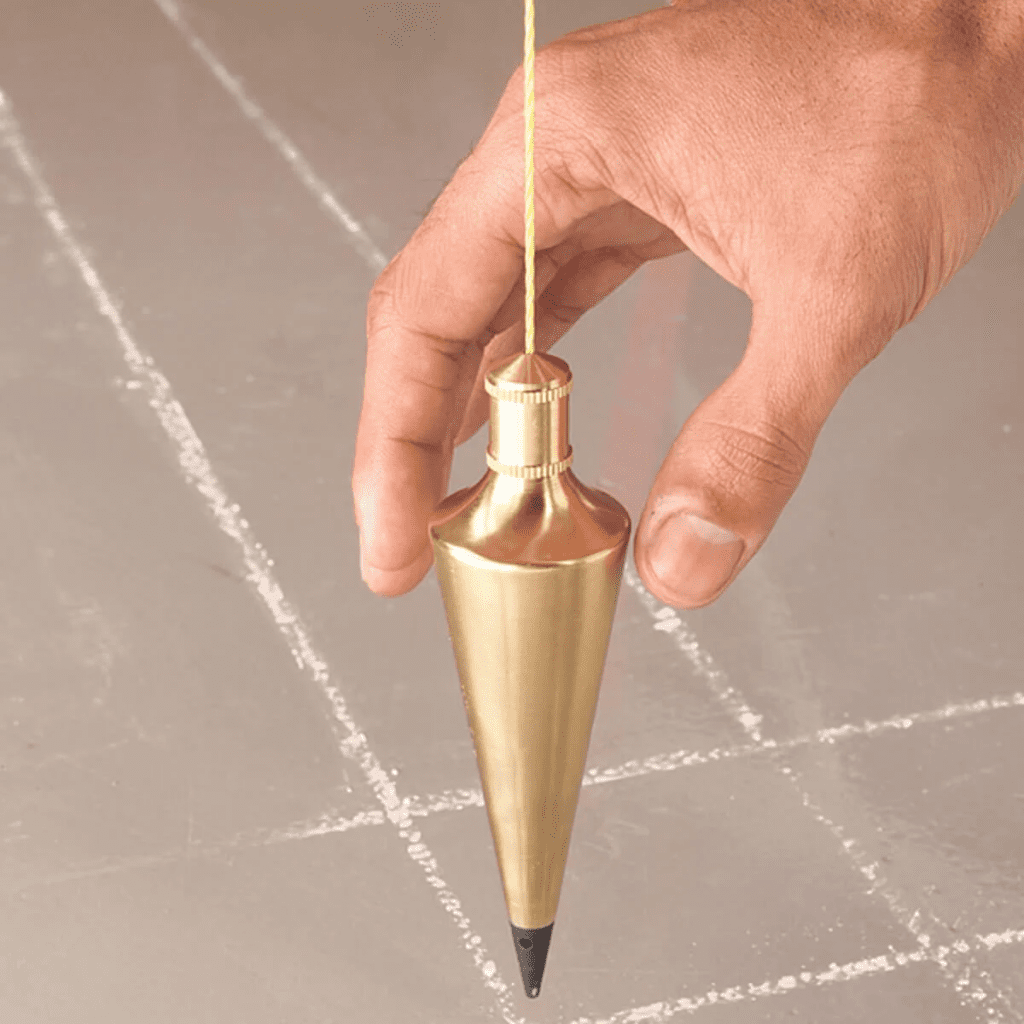The Forgotten Tool That Built a Century: The Hidden Story Behind an Old Plumb Bob
There’s something strangely captivating about old workshop relics. A single metal object can carry decades of sweat, precision, and craftsmanship—yet when we look at it today, we stare in confusion, wondering what role it once played. The item in the image is exactly that kind of mystery. At first glance, it looks like a tiny mechanical artifact pulled straight from a dusty 1950s tool bench. The shape is odd, the build is heavy, and the longer you observe it, the more you feel it once mattered—a lot.
So, what exactly is this curious little piece of metal?
It’s a plumb bob—the unsung hero of builders, carpenters, and surveyors for centuries. And its story is far more fascinating than it seems.
Understanding the Plumb Bob: A Tool Older Than History
A plumb bob isn’t just a tool—it’s a piece of ancient engineering. Civilizations from Egypt to Rome relied on it to build monuments, align walls, and define perfect verticality long before lasers or digital instruments existed. When you hold one, you’re holding a device whose basic design hasn’t changed in thousands of years.

The object in the image mirrors that legacy. Its heavy metal weight, pointed tip, and wrapped cord all echo the craftsmanship of early 20th-century workshop tools, where precision meant everything.
A Strange Shape with a Purpose
The odd-looking design of this particular plumb bob wasn’t accidental. Every curve, every groove, every piece of metal served a purpose.
Let’s break down the most distinctive features:
The Cone-Shaped Body: Made for Precision
The pointed tip offered builders a single, exact point of reference. When suspended on a string, the tip would find its perfect vertical alignment thanks to gravity. This allowed craftsmen to build walls that didn’t lean, align beams perfectly, and ensure structures were truly upright.
The conical shape you see in the photo—a tapered form ending in a sharp metal point—is the classic design that has defined plumb bobs for generations.
Ribbed Metal Grooves: Grip, Weight, and Balance
The ridges circling the body weren’t decorative. They improved grip while adding mass to keep the plumb bob stable during use. More weight meant fewer swings and faster settling, which led to more accurate readings.
These grooves also reflect a mechanically elegant aesthetic common in tools from the 1920s to the 1950s—functional, durable, and built to last.
Video : Plumb Bob in Construction Uses #plumbbob
The Rope Loop: A Handmade Touch
If you look closely, you’ll see a simple rope tied through a small hole in the body. This detail reveals two important things:
• The tool was meant to be hung vertically
• The knot style reflects older plumb bob designs from the late 19th and early 20th centuries
Before synthetic cords and modern anchors, craftsmen tied their own strings, often using natural fibers for durability and flexibility.
The Metal Cap: A Unique Feature from Early European Designs
Perhaps the most intriguing element is the metal cup or cap on top. This isn’t something you’ll find on many modern plumb bobs. Older European models often included a cap to:
• Protect the cord
• Reduce swinging
• Improve accuracy
• Add weight for steadiness
This specific design strongly suggests that the tool in the image is from the early-to-mid 20th century, likely between 1920 and 1950.
What Was a Plumb Bob Really Used For?
While it looks simple, this little tool was absolutely essential. Builders used it to create perfect vertical lines, which is one of the fundamental requirements in construction. Without vertical alignment, a structure becomes unstable. Columns tilt. Walls lean. Framework warps.

A plumb bob solved all of that with pure physics. Gravity became the guide, and the plumb bob did the rest.
Here’s how it was used:
• Masons used it to line up bricks and stone blocks
• Carpenters used it to install door frames and beams
• Surveyors used it to transfer points from floor to ceiling
• Builders used it to check the alignment of posts, columns, and ropes
It was the silent partner behind countless barns, homes, bridges, and buildings.
A Tool That Spanned Civilizations
This simple tool traces its roots back to ancient Egypt. It helped build temples, pyramids, and cities. The Romans used it to construct aqueducts and massive architectural wonders. Even today, plumb bobs still appear on job sites, unchanged in their purpose.
The version in the photo represents a more refined era of craftsmanship—likely the early 20th century, when metalworking matured and tools were designed to last a lifetime.
Why This Little Object Matters
In an age full of advanced tools and computerized measuring devices, it’s easy to overlook the raw ingenuity behind simple instruments like the plumb bob. Yet without tools like this, the world’s architecture would look very different.
This small, heavy, cone-shaped instrument played a part in shaping skylines, supporting structures, and ensuring that everything built in the past was aligned with nature’s most reliable force—gravity.
Video : How to Use a Plumb Bob | Masonry
Conclusion
While it may appear odd or even outdated, the plumb bob in the image is a remarkable piece of functional history. Its cone-shaped body, ribbed design, rope tie, and protective metal cap tell a story of precision, craftsmanship, and the builders who relied on it. For decades—centuries, even—this simple object was the backbone of vertical alignment in construction and carpentry.
So next time you see an old tool like this one, don’t dismiss it as scrap metal. It may have once been a silent architect, a trusted companion, and an essential guide in shaping the world around us.





